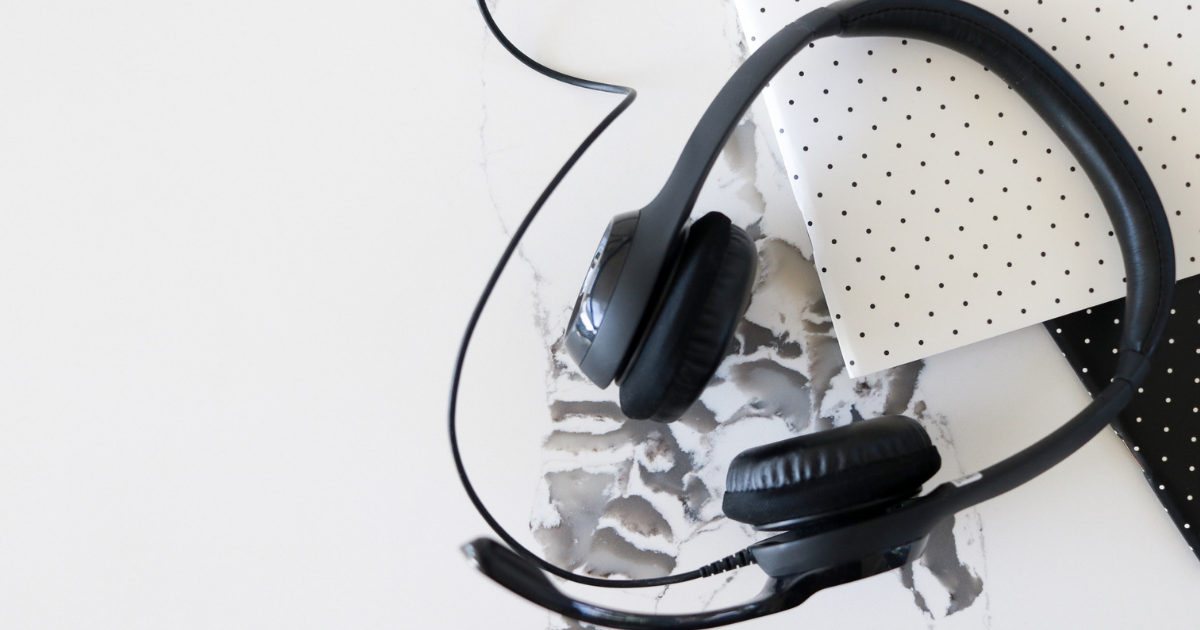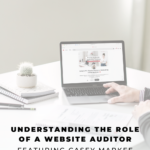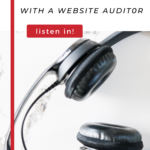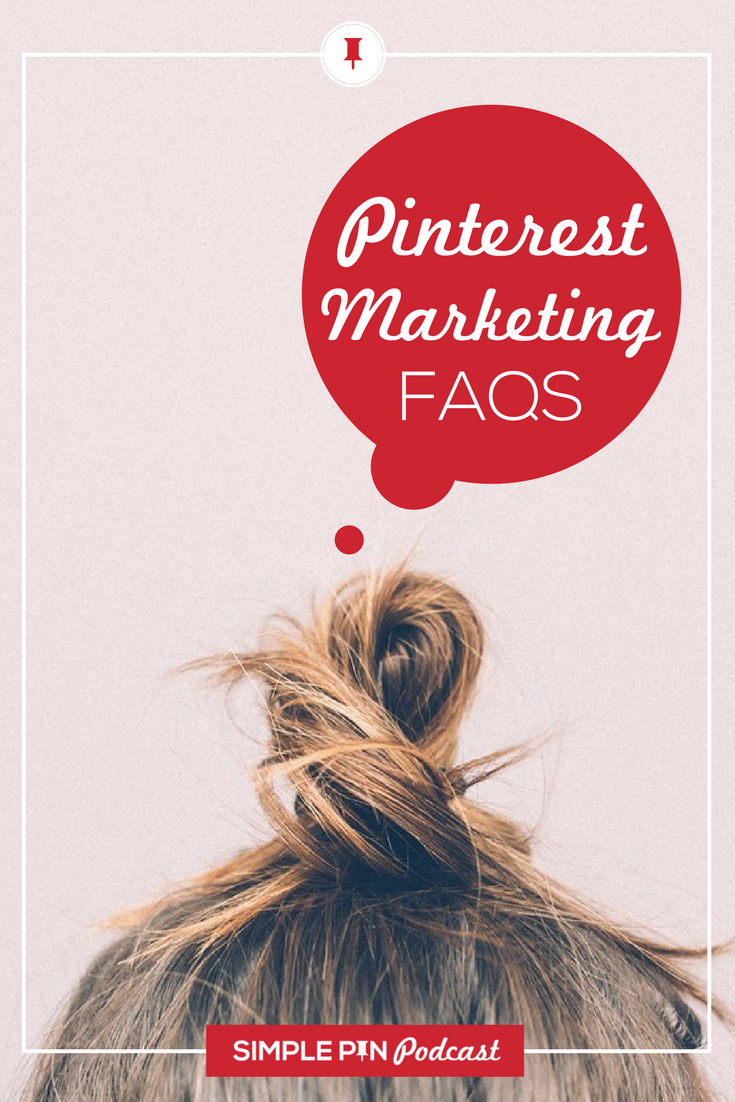Today, we are diving into all things Pinterest and Google SEO, and the importance of a website audit. Success on Pinterest starts with a website that plays smart with Google. Casey Markee from Media Wyse shares his experience as a website auditor and what actually matters when it comes to Pinterest. Casey has worked in SEO for over two decades and has completed thousands of audits. If you don’t feel confident when it comes to Google, this episode has so many helpful tips.
With that, let’s dive into the conversation with Casey Markee.

Casey first got into the SEO business in 1998 when his then-future father-in-law bought an outdoor gear online company. Casey took the lead on managing the website and learning the ins and outs of SEO. In January of 2000, Casey began Media Wyse, a San Diego-based SEO consultancy. Since the start of Media Wyse, Casey has worked with hundreds of clients, from big-name companies to smaller mom-and-pop shops. When it comes to SEO, he knows what’s up.
Related: Leveraging Pinterest SEO and Google SEO to Increase Traffic
Google Ranking and SEO
During 2020, at the height of the COVID-19 pandemic, businesses saw a huge increase in site visits and Google rankings. Everyone was stuck at home, looking for recipes to make or things to buy. But here’s the truth, we will never get back there. People have never had more traffic to their sites at any point in history than at that time. Web traffic in 2020 was an artificially inflated microcosm caused by worldly events that will likely not be replicated anytime soon. Since then we’ve seen a huge downturn, and people are wishing they could get back to where they were in 2020. Unfortunately, that just won’t happen.
AI is changing the way we do everything, including how we tackle SEO. Google has recently begun beta testing Search Generative Experience (SGE). This new feature adds an extra layer of AI on top of search results. The point? To provide the information right on the search page so the user doesn’t have to click through to your website. This ultimately and unfortunately limits traffic to a company’s website.
With all the updates in AI, it could be tempting to cater to the machine. However, Casey encourages website owners to continue catering to the human. Focus on optimizing search quality rater guidelines, making your content helpful, informative, and useful, and making it easy to find exactly what they are looking for. Success won’t happen from stuffing your page with a ton of ads or writing to a word count. It will happen when your content and website are user-friendly. So while you might think that AI is providing some kind of auto content, it’s really all based on specific algorithms trained by humans on human feedback.
Optimizing The User Experience
When Casey performs an audit on a blogger’s website, the first thing he looks at is user experience. Oftentimes a blogger will wonder why a page isn’t doing well. Most of the time it’s because they have a video ad auto-playing at the top of the page along with minimal text, some jump links, and more ads. That kind of page is not optimized for the user. The key is keeping the top of the page clear of ads and focusing on presenting a quality experience from the get-go.
Take for example a recipe on Hungarian Goulash. What is it about this goulash that makes it better than all the other recipes out there? Did you make a specific change to it? Does it take less time to prepare? These are the kinds of things a user is looking for at the top of your page. As the user moves down the page, the goal is to make it easy for them, and Google, to digest, index, and algorithmically score all the individual components. Don’t cover those with ads, don’t add five shots of the finished dish, use jump links so users can get down to the most important information they need, and put things in an order that makes sense.
For years there have been issues with recipes or entire pages no longer being indexed on Google. That problem stems from an incredible amount of DOM nodes generated by excessive ads, excessive photos, and excessive needless superfluous elements that bloggers have added to their website templates. DOM nodes are a document object model, little pieces of code that make up a page. To determine if this has become an issue for your site use Google’s PageSpeed Insights Report. If you get DOM node warnings when you plug your website in, Google is having a hard time crawling your website. It’s time to rethink how you are optimizing your site.
Related: Google’s PageSpeed Insights
Using Pop-Ups Well
Too many ads are a deterrent. And yet Casey sees clients get pulled into running extremely high ad densities. The only time you should ever run high ad densities is in Quarter Four. You don’t need to be running 28% or higher ad densities any time of the year other than a two-month stint at the end of Quarter Four when you’re going to have increased traffic because of holiday search trends.
Casey gets a lot of pushback around this topic because bloggers need to make money. However, the problem is that you can actually make a lot of money by running fewer ads. By cutting your ads back, you provide a better user experience, which ultimately leads you to generate more traffic because it’s much easier for Google to crawl and algorithmically score your content.
In addition to pop-up ads, another element to consider that may be hurting your SEO are pop-up opt-ins. Many bloggers do not realize that pop-ups that activate on the first click from Google are actually damaging your SEO. If you want to run a pop-up, run the pop-up between pages, or even better, add a subscribe link to your website header. Are you going to get as many sign-ups as your pop-up? No. But are you going to do better long term? Absolutely.
So bottom line, Casey’s advice is to optimize the experience for your user and make sure your site is as attractive to Google as possible by limiting pop-up ads and opt-in pop-ups as much as possible.
Optimizing Pinterest and Google
Pinterest and Google are two of the top search engines that bring a lot of traffic to bloggers’ sites. However, their best practices are different. So that is something to take into account as you are trying to optimize your site.
While placing pins at the top of your page might seem like a good idea for Pinterest, it will hurt your SEO on Google. Casey has done extensive research and found that long-form Pins displayed in posts do not get clicked on. Research shows that having a 1200-1800 pixel Pin image on your page is not going to generate a positive metric for user experience or SEO. A super easy way to improve your page speed and quality of your page is to omit long-form Pins. Instead of displaying them in the post, Casey recommends hiding these pins on the page. The best thing you can do as a blogger is keep things simple for the user: a clean featured photo at the top (no text overlay), a clear title, and a teaser at the top of the page to draw them in.
Another thing to note when it comes to optimizing your site for Google and Pinterest: 404s are not bad. A lot of bloggers think they are a sign of low quality, but that is actually not true. Redirect links are actually worse for your user experience. If you have a user on your site clicking a link for blackberry pie and they are taken back to the home page, they’re not going to stick around on your site. It is better to have a 404 page than a complete redirect link. There is no SEO value in having all of your deleted pages immediately redirect to a home page or a category page.
The Importance of Alt Text
Casey shares that many bloggers miss the importance of alt text and don’t understand how to use it. Alt text is often overlooked but if you want to make your site accessible to the blind, you need to understand how to optimize it. Accessibility is a ranking factor so it’s definitely something to consider when thinking about SEO. Some key components to keep in mind when using alt text include:
- Make sure to conclude your alt text with a period. This tells the screen reader that the alt text is completed, and lets the user know they can move on to the next thing.
- Use alt text as a way to describe what is happening in photos. Do not just write in the name of the recipe.
- Don’t worry about adding in contextual words such as “top view”, “side view”, or “close up”. Those add no value to the alt text.
Related: How to Make Your Website ADA Compliant
Google coRE Update
A Google Core Update takes place when Google makes a significant broad change to its search algorithm. Google reassesses the sites that are ranking for various queries, and they change the sequence of those sites based upon improvements or maybe deficiencies on those sites going forward. In turn that means the list in search results will change. Sites that previously ranked high might not do as well and be moved down on the list because other deserving sites have moved up. This is how quality comes into play if you are a site that has been bumped down. Casey encourages bloggers to always be reassessing their site. That’s why audits are so important. You want to focus on making sure that you’ve created helpful, reliable, people-first content that asks and answers the queries that users are looking for.
Next Steps – Book a Website Audit With Casey
When Casey is performing an audit, his goal is to take a look at how the site is presented and how it compares to other ranking results. If a blogger is trying to rank for a Hungarian Goulash recipe and can’t break page one in Google searches, Casey compares the page to what is ranking on page one for Hungarian Goulash. Are their major known entities that are missing? Are there too many ads? Not enough? How quickly does the page load? The goal of the audit is to make sure that you’re putting together a high-quality page that Google will reward you with higher rankings for, not because you think it’s going to make you more money.
If you want to improve your SEO ranking and learn how to optimize your website, make sure you book an audit with Casey.
Join Casey at the Tastemaker SEO Summit (CODE: MW199 for $200 off)
Pinterest Keywords – How to find them
GA4 Workshop – A workshop to help you navigate the new Google Analytics platform










A website auditor is crucial for optimizing both Pinterest and Google SEO. By thoroughly analyzing website content, structure, and performance, it helps identify and rectify any issues that may hinder search engine visibility. With improved site health and relevance, your content becomes more discoverable, leading to higher rankings on both platforms. Investing in a website auditor is a smart move towards maximizing your online presence and driving organic traffic to your site.
Thanks for the feedback!